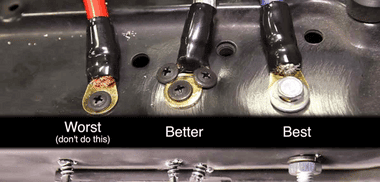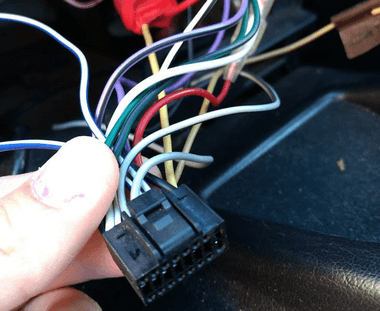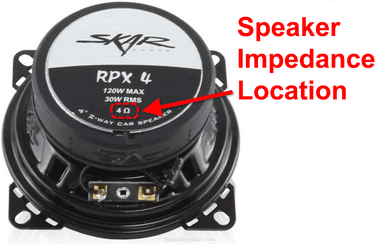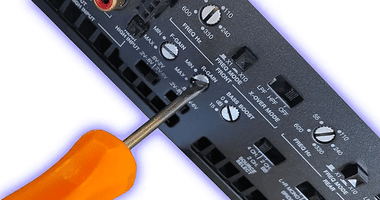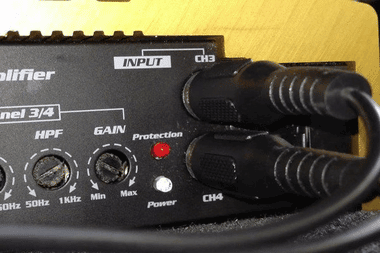How to Get an Amp Out of Protection Mode – Easy Steps to Follow
Welcome to the Ultimate Guide on how to bypass protection mode on amp!
Thinking about how to disable amp protection mode and keep your music pumping during your drive? I’ve been there too, and I’m here to share some insights and amplifier repair tips.
Let’s get one thing straight: amplifiers can enter protection mode for a whole host of reasons. There’s no one-size-fits-all solution, but there’s no need for detective work either. I’ve got a straightforward guide wrapped in everyday language for you.
After countless nights researching and diagnosing, coupled with extensive experience in audio equipment repair and car audio system maintenance, I’ve battled this issue often dubbed as “the silent joy-stealer.” My quest began when Jay-Z suddenly fell silent during a long drive.
As a fellow music lover, I share your frustration when the beat suddenly drops. But today, we’re all about amp protection mode solutions and victory!
Heads up: After this guide, be ready for a bit of a letdown after the adventure, but also expect random bursts of joy when your tunes kick back in.
So, let’s hit the road and dive right into this amplifier technical issues rescue mission!
[lwptoc]
Before I can tell you how to get rid of protect mode you need to understand why it happened so you can prevent it in the future. It will be short I promise.
Why Do Amps Go into Protect Mode?
There are many reasons an amp could go into protection mode. Here are the most common ones:
- Internal Failure: Internal failures like problems within the amplifier itself can cause it to go into protection mode. For example, a blown fuse or malfunctioning transistors could trigger the amp to go into protect mode.
- External Failure: Any of the supporting components could be faulty. The speaker wire sparking or a problem within the head unit could cause the amp to shut down and go into protect mode.This protects the problem from spreading and halts the malfunction in its tracks.
- Overheating: Overheating is one of the most common causes for amps going into protect mode. Especially if you have mounted your amp under the seats in a car or it is placed in a spot with poor airflow, the thermal overload can trigger the amp to go into protect mode.Amps have many plastic components. Overheating could cause them to melt inside, causing permanent damage to the amp. Going into protect mode stops the overheating.
- Overwhelmed Circuits: Amplifiers and subwoofers have different capacities. If you plug an amp into a subwoofer with a lower impedance load, the extra wattage will overwhelm the amplifier.The circuits won’t be able to handle the load and the amp will go into protect mode.If your amp goes into protect mode whenever you play heavy bass at maximum volume, it is likely that there is a load mismatch between your subwoofer and your amplifier.
How to Get Amp Out of Protection Mode:
Here are a few easy fixes to get your amp out of protection mode.
1. Disconnect Speakers
Disconnecting the speakers is like performing first aid for the amp. Unplug all the speaker wiring and RCA cables. The amp should only be connected to the power, ground and remote leads.
Now, turn the amp back on. If you’ve bypassed protection mode, you probably have a blown speaker on your hands.
Now check all the speakers. If one of them is indeed blown or grounded to a metal part of the vehicle, the amp is probably sensing a connection that overheats easily and goes into protection mode to prevent damage.
Check the electrical response of your speakers with a multimeter. If the engine is on and the voltage is lower than 12V, it is an issue with the speaker.
2. Check the Temperature of the Amp
If your amp is too hot to the touch, it is overheating. There can be many reasons for an amp overheating like load mismatch, blown or grounded speakers or poor power connection.
Move the amp to an airy area. It is possible that it is simply overheating due to poor airflow. If possible, place it in an area with space on the sides, top or bottom for better ventilation.
3. Unplug the Head Unit
If your amp turns on normally after you disconnect it from the head unit, it is an indication that the head unit or the wiring between the amp and the head unit is malfunctioning.
4. Check the Ground Connection
Amplifiers need large, well-connected power and ground cables to keep functioning efficiently. If either of the cables is too small, the amp will shut down and enter protection mode whenever you play hard-hitting bass.
If the amp doesn’t receive the power it needs, it will fail to turn on or stay in protect mode to prevent damage.
5. Check All Cables
This is pretty basic—all cables should be secured firmly. If your amp goes into protect mode the first time you turn it on, the problem could be with one of the wires.
Make sure none of the wires are loose, shorted or corroded.
6. Check Impedance Load
A mismatched load is a very common problem in malfunctioning amps. If the amp is designed to take 2 ohms and it is hooked to speakers with a capacity of 4 ohms, the amp detects low impedance and tries to measure up to it.
It uses extra power to do this which causes it to overheat and shut down. Check all the speakers and subwoofers to make sure that your amp can handle the total impedance load.
7. Reset the Amp’s Gain
There is a ‘gain’ knob on your amp. This is what connects the amp’s input to the output of the head unit. Adjusting the gain results in a clear, rich sound devoid of background noise.
Though it doesn’t relate directly to it, if your amp’s gain is not set properly it will result in distortion of sound or speaker damage, which could trigger your amp to go into protection mode.
Troubleshooting Protect Mode in Amplifiers
If you are a complete beginner, I recommend that you seek the help of a professional or a friend who knows his way around amplifiers. Meanwhile, here are a few hacks to help you figure out the problem on your own:
- If your amplifier went into protect mode the very first time it was turned on, this gives us an insight into why it was malfunctioning. It could be that the amp is installed incorrectly or one of the speaker wires is loose.If someone else installed the amp, reach out to them before you dive into the issue on your own. Check all the power cables and make sure the amp is not in physical contact with the metal part of the vehicle.
Examine all the wires and make sure they haven’t shorted or corroded. Check if the turn-on wire has power.
- When you’ve been playing music for many hours and the amp suddenly goes into protect mode, it is likely overheated. Let it cool down for a while. Air out the area so the amp can get back to a normal temperature.It is also possible that the circuits are overloaded. Check if the subwoofers and the amp have the same impedance load.
- If your amp goes into protect mode when you’re on a bumpy ride, the shocks to the system could have shaken loose any wires not properly secured to the system.This automatically shuts down the amp and puts it in protect mode.
What’s Amplifier Protect Mode Anyways?
Amplifiers have a lot of working parts and all of them are pretty expensive or hard to replace. Especially the power transistors, without which the entire amp is quite useless.
The speakers in your car stereo can also be adversely affected by any malfunctions in the amp. The voice coil will blow out if they experience voltage fluctuations and you will be left with dead speakers.
Thus, amplifiers come with a fail-safe to protect other components of your sound system. Any indication of a failure in the amp shuts it down, preventing damage to your speakers, power transistors and stereo.
If your amp goes into protect mode frequently, it is a sign that something is wrong with your sound system. You should troubleshoot the problem and fix it right away. Do not ignore it as it might become a bigger problem later.
Most amps have a protect light on the amp that switches on whenever the system detects a problem. If it doesn’t have a light, you need to go through the manual to figure out if the amp is in protect mode.
The power LED can also be an indicator of the status of the amp. It is usually green when the amp is up and running. If it is red or orange, the amp is in protect mode.
Note that the indicator for being in protect mode can differ depending on the model and brand. Look through the owner’s manual to be sure of the amp’s status.
Conclusions on How to Get an Amp Out of Protection Mode
Many things can cause an amp to go into protection mode. Troubleshoot your amp to figure out what the problem is. You will most probably find a solution in one of the quick fixes listed above.
If you’ve tried everything but your amp is still in protection mode, it is time to accept defeat and head to the repair shop.
Maybe you can help me with something. Can you please share on social media how this post helped you? It would mean a lot for me. Thank you!
Roger and Out.
Frequently Asked Questions:
How Do I Get My Amp Out of Protect Mode?
To get your amp out of protect mode, you first need to troubleshoot the problem to find out what caused it.
You can try disconnecting the speakers. If the amp starts working, you most likely have a blown speaker you need to replace.
Overheating, faulty wires, mismatched load and improperly set gain could all result in problems that can cause the amp to go into protection mode.
If you’re wondering how to bypass protection mode on an amp completely and keep using it without solving the problem, there is no known way to do that. It exists to protect the equipment and for your safety, so it is best you find a solution to the issue first.
How do you fix an amp in protection mode (how to bypass protection mode on amp)?
You can fix an amp in protection mode by diagnosing the source of the problem:
- Disconnect Speakers
- Check the Temperature of the Amp
- Unplug Head Unit
- Check the Ground Connection
- Check all cables
- Check Impedance Load
- Reset the Amp’s Gain
Why does my amp stay in protection mode?
An amp stays in protection mode to keep it safe from harm. If you shot off your car and wait to cool it off and the amp goes out of protect mode then there’s a temperature issue. If it doesn’t check out my list mentioned above.
Can a bad ground cause an amp to go into protect mode?
Yes one of the main causes of the amp going into protection mode is a bad ground. Check that first to rule it out.
Why does my amp go into protection mode when the bass hits?
The reason why the amp goes into protection mode when the bass hits is that it doesn’t have a the necessary power. Just to rule out other issues try to turn the volume down which means less power is needed. If it works then you definitely need to upgrade your amp to a more powerful one. Now you know why the amp goes into protect mode when bass hits.
Why does my amp go into protection mode when i turn it up?
The amp goes into protection mode when you turn it up is because it can’t provide the necessary power. When you turn it up you are demanding more power which the amp can’t deliver this is why it goes in protect mode. So if this happens frequently you need to consider upgrading it.
Why does my amp go into protection mode when i turn it on?
There are two reasons why the amp goes into protection when you turn it on. When turning the car on you either getting way too much voltage or way too little and to protect the amp itself it goes into the protect mode. If the amp is working fine in other times then you need a multi-meter and measure the DC Volt output and it should be around 14V. Next you need to measure the same thing when your turning it on. If it’s too much voltage it means the alternator is putting out way too much. If it’s too little then a fuse might be loose and that’s causing the problems.
How do I reset my amp?
To reset your amp you need a paperclip and find the tiny hole labeled reset. You need to apply a firm pressure for a few seconds and you’re done resetting your amp.
How do you fix a car amp in protection mode?
To fix a car amp in protection mode you need to check the following things:
- Disconnect Speakers
- Check the Temperature of the Amp
- Unplug Head Unit
- Check the Ground Connection
- Check all cables
- Check Impedance Load
- Reset the Amp’s Gain
How to get my amp out of protection mode?
If you’re experiencing protection mode in your car audio system, there are a few steps to try. First, check the impedance load; if it’s too low, the output transistors may be at fault. Disconnect the stereo setup and see if that resolves the issue. In case of an amp malfunction, make sure that it is not getting too hot or has loose connections. Resetting by unplugging for several minutes can help or change the fuse if needed. If all else fails, seek advice from a professional installer – they will assist you in bringing your audio back to life!
Why is my amp in protect mode?
If your car audio amp is in protection mode, it may be due to a few different factors. The most likely situation is that the case is too hot, which can happen when the radio volume is high or if the amp is located in a confined area. Another possibility is that the fuses are blown. Fuses are designed to guard against any electrical surges and shut off power before serious damage can occur. Finally, check for loose terminals; these can be caused by patch cables not being fully plugged in as well as excessive vibration of the amplifier itself.
With all this being said, there are times where an issue with your amplifier could be more than just regular maintenance. In those cases, you may have to enlist professional help since a defective state of your unit might be triggering protection mode. But most issues can be resolved through troubleshooting the basic components listed above. And once done correctly, you should expect nothing but clean and powerful sound from your amplifier again!
Why Is My Amp Going into Protect Mode?
Amps can go into protect mode for many different reasons such as internal failures like blown fuses or malfunctioning transistors, faulty external components like bad speaker wire wiring, overheating due to poor ventilation and airflow, overwhelmed circuits with mismatched loads between the subwoofers and amplifiers.
How to Get Amp out of Protect Mode?
To get an amp in protection mode you’ll need to troubleshoot by diagnosing which component caused it to enter protection mode. This could mean disconnecting speakers and checking all wire connections, unplugging the head unit and making sure all cables are secure, resetting the gain knobs, or checking the impedance load on both your subwoofers and amplifier.
What Causes Amp To Go Into Protect Mode?
Causes for amplifiers going into protect mode include internal failures like blown fuses or malfunctioning transistors, faulty external components like bad speaker wires leading to excessive heat build-up, overwhelmed circuits with low impedance loads between subwoofers and amplifiers, loose wires causing voltage fluctuations when driving over bumps in the road.
How Do I Get My Amp Out of Protect Mode?
To get your amp out of protection mode first troubleshoot what caused it go into this state. Disconnect all speakers; check for temperature issues; unplug head unit; check ground connection; make sure all cables are secure; adjust impedance load; resets gains knobs if necessary etc. If these measures don’t work there might be an issue with one of its internal components – you will need to seek help from a technician who has experience handling household sound equipment as well as car audio setups in order to repair it properly.
What is a car amplifier and what does it do?
A car amplifier, also known as a car stereo system amplifier, increases the power of an audio signal such that it can be sent to loudspeakers or other components in a vehicle. It helps make the output from the speakers louder and clearer by boosting the electrical response of the speaker.
How are power and ground wires connected in a car stereo setup?
Power and ground wires are typically connected to the positive (red) and negative (black) terminals on a battery respectively. The positive wire is then run to an inline fuse before connecting to the amp’s power terminal while a separate ground wire goes directly from the battery’s negative terminal, along with any additional chassis connections if necessary, to complete the circuit.
Why should only one power cable be used for a car stereo system?
Using only one power cable protects both components from prematurely failing due to too much amperage being put through each device. With multiple cables running together, there is always a higher risk of voltage drop which could lead to short circuits or other electrical problems. Furthermore, running multiple cables will reduce all performance levels because parts of the current cannot flow freely through multiple cables at once.
What happens when you add too low impedance load with your car amplifiers?
Adding too low impedance load can cause damage to your amplifier as well as your speakers since it significantly reduces current draw of your amplifier putting more strain on its internal components leading up to overheating or even burning out entirely. If left unchecked this problem can eventually lead to catastrophic failure not just in amplifiers but also in speakers due electrical overload induced by lower than optimal impedance loads.
How should all cables be secured when installing a car audio setup?
All cables should be routed safely away from any moving parts within your vehicle’s engine bay before being securely fastened down with zip ties or other suitable means that prevent them from becoming loose over time due to vibration caused by driving on bumpy road surfaces for example. Doing so will ensure maximum longevity for both components as well as reduce any potential noise interference caused by loose connections over time posing greater risks for malfunctioning electronics in vehicles overall.
Last Updated on October 22, 2023 by Brian Beasley





